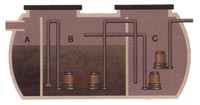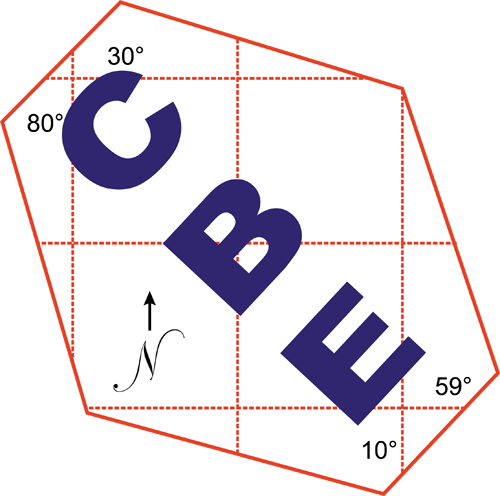SEWERAGE TREATMENT MODULE --
CA-12 and and CA-15
Description & Technical Specifications
Model CA-12
Model CA-15
A cousin to the smaller CA-5 model with larger aeration and clarifier compartments, the CA-12 and CA-15 are ideally suited for larger homes with more than 3 bedrooms. The Model CA-12 has maximum hydraulic capacity of 1,200 gallons per day, while the CA-15 is 1,500 gallons per day. Both units operate under standard SBR principles; fill, react, settle and discharge.
Applications range from residential, commercial, and recreational. Due to its unique modular design and simple controls, design engineers around the world specify the CA-12 and CA-15. Single discharge pump is standard, but may be engineered with duplex for redundancy. With higher organic loading obtainable and increased surge volume for peak flows, the CA-12 and CA-15 are the preferred choice for flows up to 1,500 GPD.
DESCRIPTION CA-12 CA-15
Capacity: 1,200 (gpd) 1,500 (gpd)
Dimensions (L x W x D): 11’3”x 5’ 7”x 5’ 7” 11’3”x 5’ 7”x 5’ 7”
Shipping Volume 450 cf 450 cf
Shipping Weight: 1,020 lbs 1,020 lbs
Discharge Volume: 200 gals / 6# per day 260 gals / 6# per day
Aeration Capability 9 lbs / per 24 hrs 11 lbs / per 24 hrs
Control Panel 115v / 1ph / 60hz / Nema 4 115v / 1ph / 60hz / Nema 4
Total Amps Required 15a / 120v 15a / 120v
Electrical Consumption 8 kwh / 24 hrs 10 kwh / 24 hrs
Aeration Pump(s) 1/3 hp WE0311M 1/2 hp WE0511B
Discharge Pump(s) ¼ hp ¼ hp
SS Tie Down Rod Package 4# 4#
Typical Cycle
 FILL;
AERATION
FILL;
AERATION
Flow enters the Solids Retention Section (A) that is separated by non-corrosive screen. Inorganic solids are retained behind the screen. Organic solids are broken by turbulence created with mixed liquor being forced through screen by submersible aeration pumps. This eliminates the need for mechanical comminution.
AERATION
Liquid and small organic solids pass through the screen into the continuing Aeration Section (B). Air and mixing are provided by submersible pumps with venture aspirators that receive air through pipe intake from the atmosphere.

DENITRIFICATION (OPTIONAL)
Provided by an anoxic period during the regular treatment cycle. Cromaglass units create anoxic conditions by closing the air intakes of the aeration pumps with electric valves. This stops aeration, but the system continues mixing.
TRANSFER/SETTLE
Treated mixed liquor is transferred by pumping to the Clarification Section (C). The transfer period overfills the Clarifier with the excess spilling through over-flow weirs back into the main Aeration Section. Transfer ceases and Clarifier ( C ) is isolated – solids separation occurs under quiescent conditions.

DISCHARGE
After settling, effluent is pumped out of the Clarifier ( C ) for discharge. Return sludge is pumped from the bottom of the Clarifier ( C ) back into the main Aeration Section (B) using a submersible pump or sludge can be wasted to a Sludge Processing Tank.
